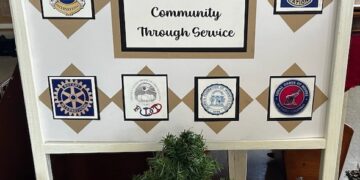
That brings me to the topic for this month’s article – taking a brief pause from southern gospel history and discussing the ‘nuts and bolts’, I guess you could say. The ‘heart’ of my interest in southern gospel history is a collection of over 1,500 classic albums. I have built this collection over the last 3 years through thrift store finds, online orders, and listener donations. Like I’ve said before, southern gospel is unique in that (unfortunately), many of the albums were never released on CD. In most cases, the record companies simply went out of business, and the question of ‘who owns the music’ became more and more difficult to answer. Vinyl is practically a necessity when it comes to harnessing all that southern gospel has to offer.
When your collection starts to grow (no matter the genre), it can become a bit intimidating. The trick is, simply, to ‘keep it organized’. If you know me, I am an extremely organized person, and this definitely comes in handy when dealing with music preservation. Approximately 80% of my collection (pictured here) resides at the WBTX studios. Before each shift, I take about 10-15 minutes to carefully select different albums each and every morning (an additional 10-15 minutes is spent selecting CDs). I know exactly what is on the shelf and exactly where it is. With as little as 60 seconds to go ‘live’, I can think of a song, run next door to the record library, pull the correct album almost instantly, and have it cued up on the turntable, ready to go.
My organization system is simple: albums are sorted alphabetically by artist/group. Then, within each artist/group, they are sorted by release date (year). That’s all there is to it.
Now, there is a second level of organization I use, more categorization. This harkens back to the WBTX of the 1970s and 1980s, when albums were used regularly. WBTX used a color-coded system to categorize albums: green (southern gospel), blue (middle-of-the-road/inspirational), and orange (country gospel/bluegrass gospel). Technically, I would not need this level of categorization, but I felt it would be nice to re-implement as a ‘nod’ to the olden days.
Having everything organized and categorized is great, but it doesn’t really do any good unless you continuously ‘keep up’ with the collection. By choosing to do radio ‘the old fashioned way’ (exclusively CDs and vinyl), I am interacting with the library each and every day. This is how I know not just where an album is on the shelf, but also which album I need. I suppose one of my ‘gifts’ is that of a photographic memory. It was August of 2021 when I made the personal decision to move away from the computer, and program all of my music from CDs, vinyl, and the occasional tape. Almost immediately, as I began to handle the physical media more and more, I began to see which albums some of my favorite songs were on. I was able to associate that song with that album – what the album looked like, and where it fell within that group’s discography.
Simply put, one thing led to another. It became easier to locate particular songs/albums; and at the same time my collection continued to grow through new acquisitions. Remember, only 80% of my collection is on-hand at WBTX; the remaining 20% is at home. This ‘off-site’ collection encompasses Christmas, sacred country, and even some Contemporary Christian. Here again, everything is organized in a custom-built cabinet (modeled after those at WBTX).
Organization – it’s a simple concept, but many times easier said than done. It’s pivotal to bringing you the absolute best assortment of southern gospel music. As long as I can find it, you’ll be able to hear it!
































